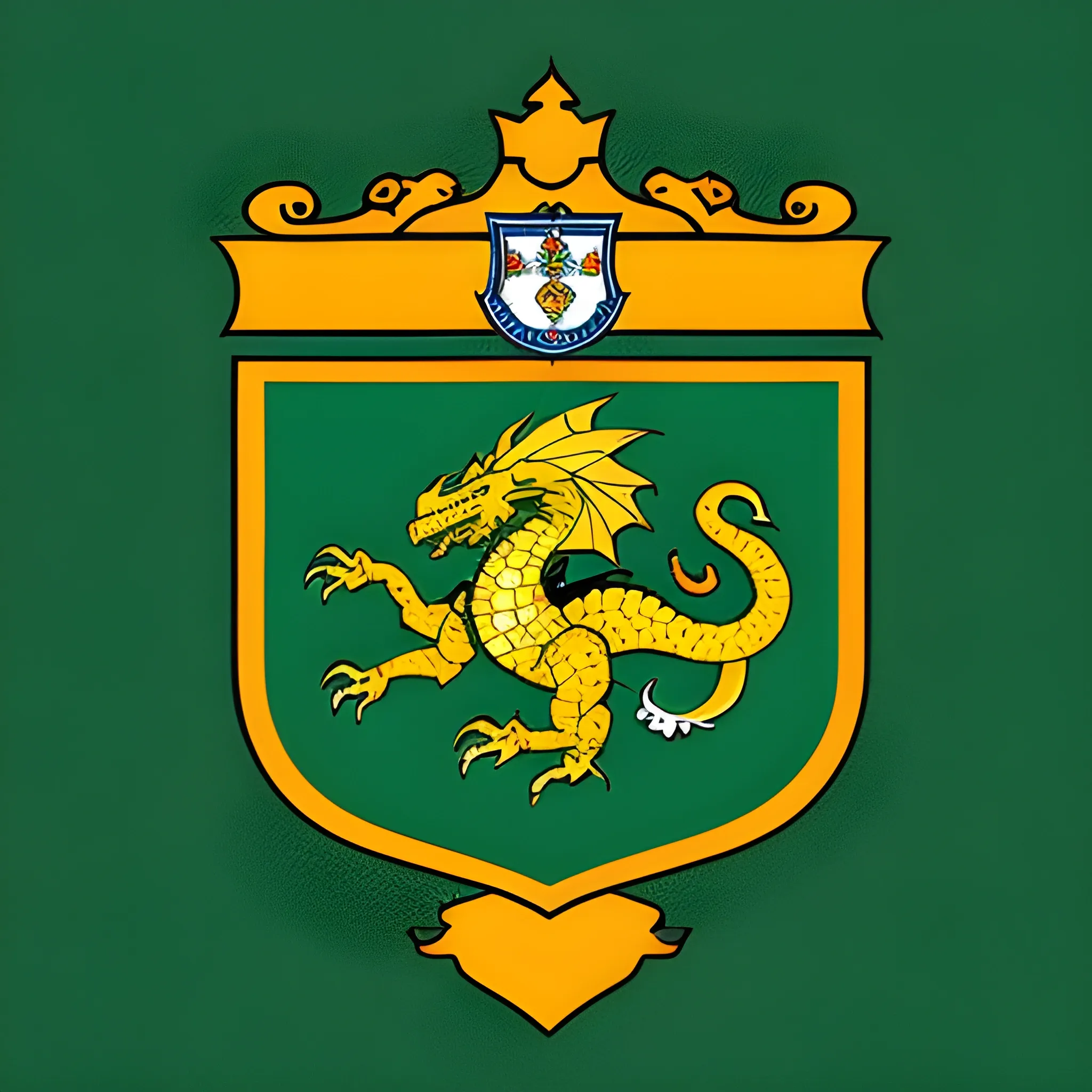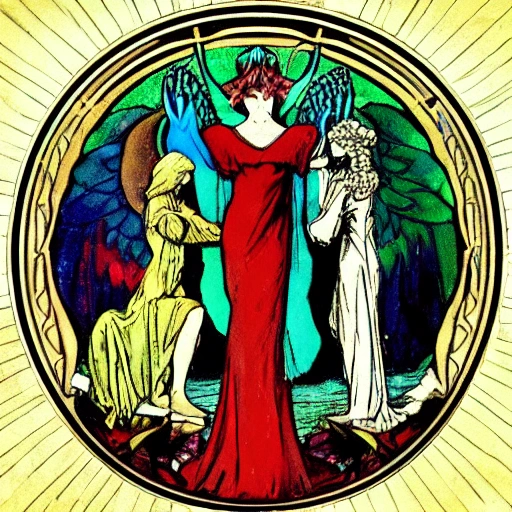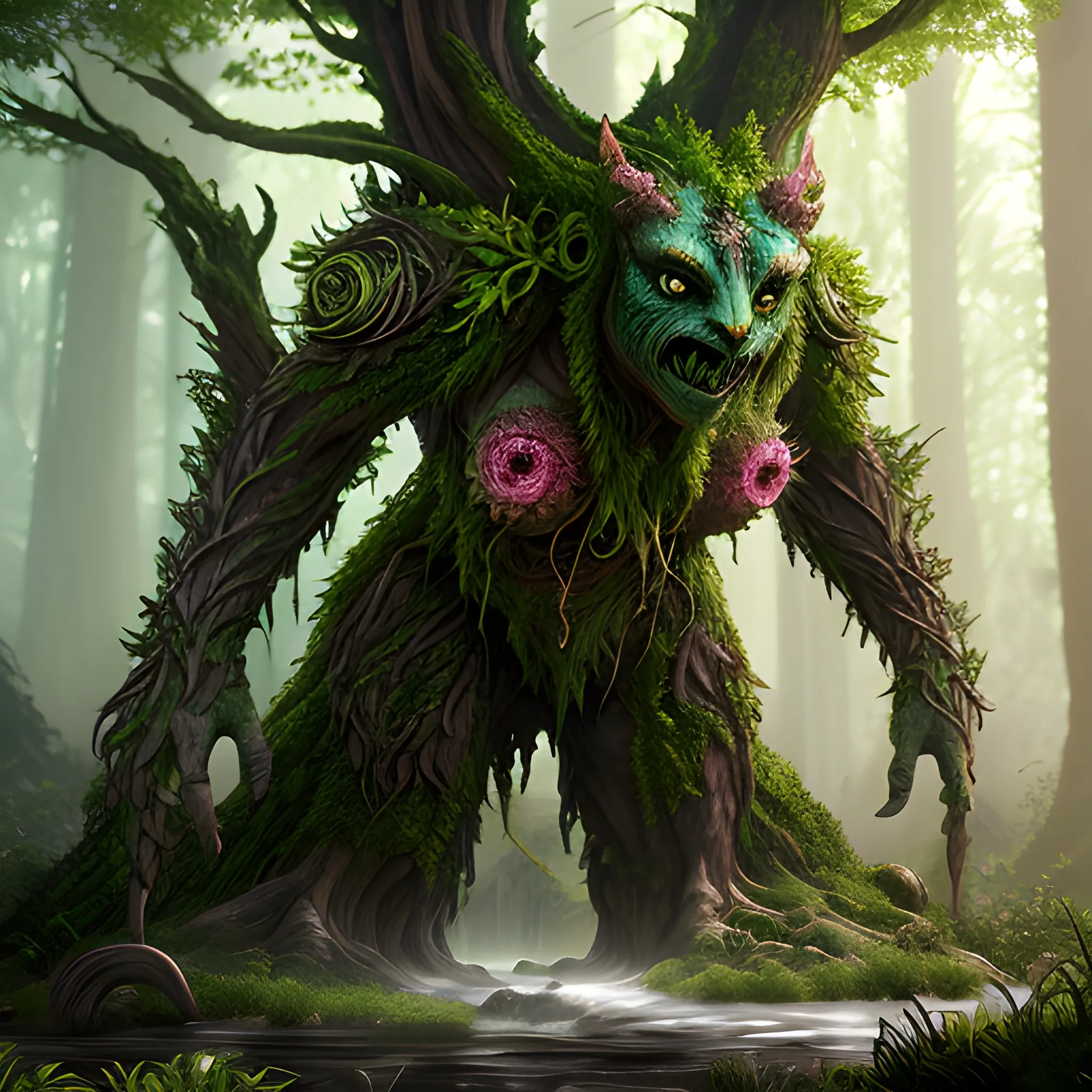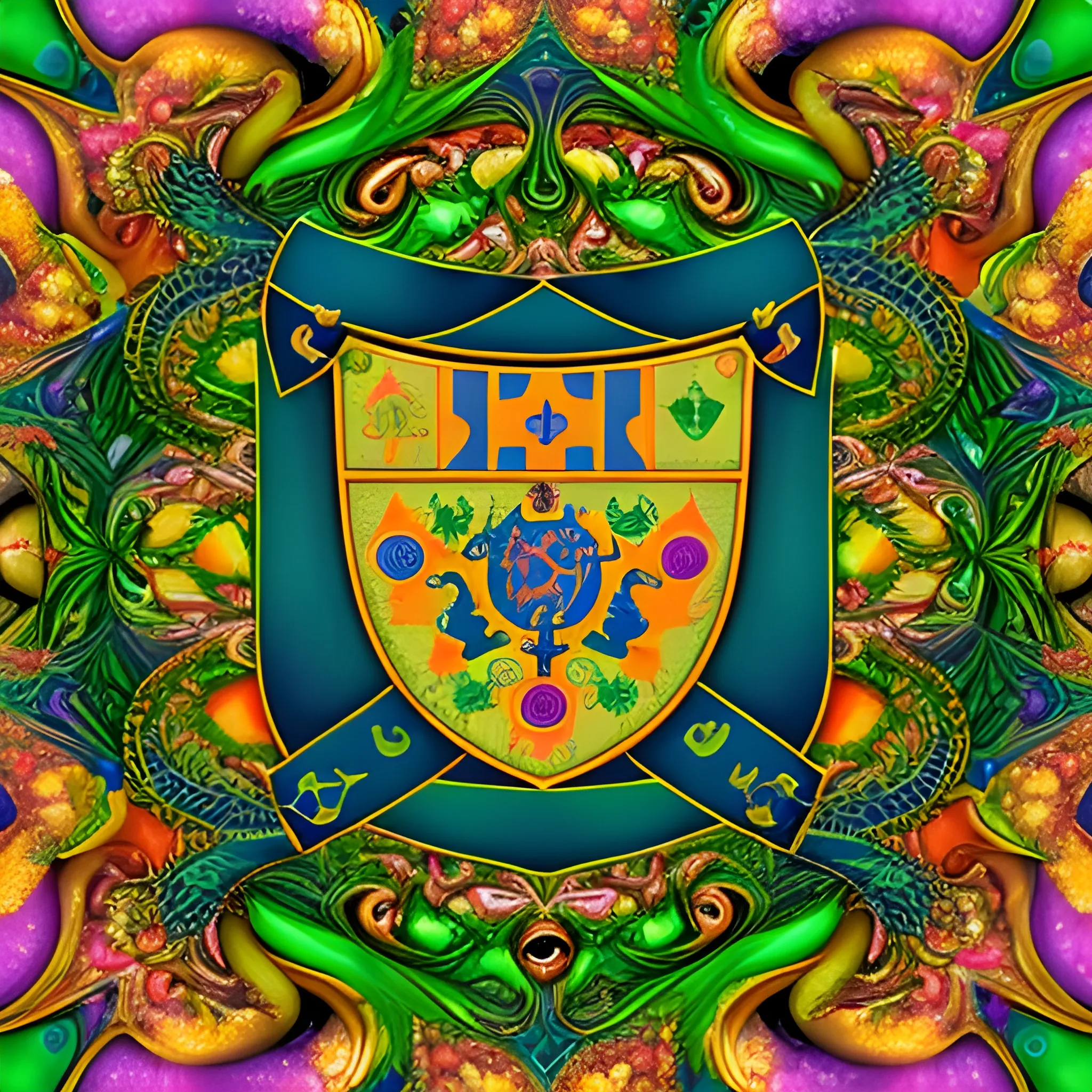Search Results for Guardian
Explore AI generated designs, images, art and prompts by top community artists and designers.

Appearance: The Crocodile is a large and powerful reptile , known for its distinctive long snout , sharp teeth , and armored body. Its scales can have various shades of green , brown , or gray , blending in with the murky waters and marshes it inhabits. The Crocodile's eyes and nostrils are positioned on the top of its head , allowing it to remain mostly submerged while still keeping a watchful eye on potential prey. Features: The Crocodile is an apex predator in aquatic environments , using its powerful jaws to seize and drag its prey underwater. It possesses incredible strength and resilience , making it a fearsome hunter and a challenging opponent for adventurers who venture into its territory. Crocodiles are well-adapted for both land and water , able to move quickly on land and remain submerged for extended periods. Habitat: Crocodiles are typically found in freshwater bodies such as rivers , lakes , and swamps , though they can also inhabit saltwater habitats like estuaries and coastal areas. They are highly territorial creatures , claiming areas of water as their own hunting grounds. In your DND world , they might be guardians of hidden treasures or sacred places. Behavior: Crocodiles are ambush predators , relying on stealth and patience to catch their prey unaware. They lie submerged , often with only their eyes and nostrils visible , and strike with lightning speed when an opportunity presents itself. Crocodiles are more aggressive during their breeding season or if they feel threatened. Role in the World: In your DND world , Crocodiles could be symbols of primal power and ancient guardians. They might be revered or feared by local tribes as creatures of great significance in their myths and beliefs. Druids and rangers might have a connection with Crocodiles , viewing them as an essential part of the natural order. Encountering a Crocodile in the wild can be a dangerous and adrenaline-pumping event for adventurers. Players must be cautious around bodies of water known to be inhabited by Crocodiles , as these creatures can launch surprise attacks. Crossing rivers or exploring swampy terrain could become treacherous , and players will need to be vigilant to spot the telltale signs of lurking predators. The presence of Crocodiles in your campaign adds an element of danger and excitement to aquatic and marshy environments. They can create memorable and intense encounters , challenging players to use their wits and skills to outmaneuver and defeat these fearsome reptilian predators. Additionally , the idea of crossing treacherous waters or exploring hidden marshlands where Crocodiles dwell can evoke a sense of adventure and exploration in your DND world. ,
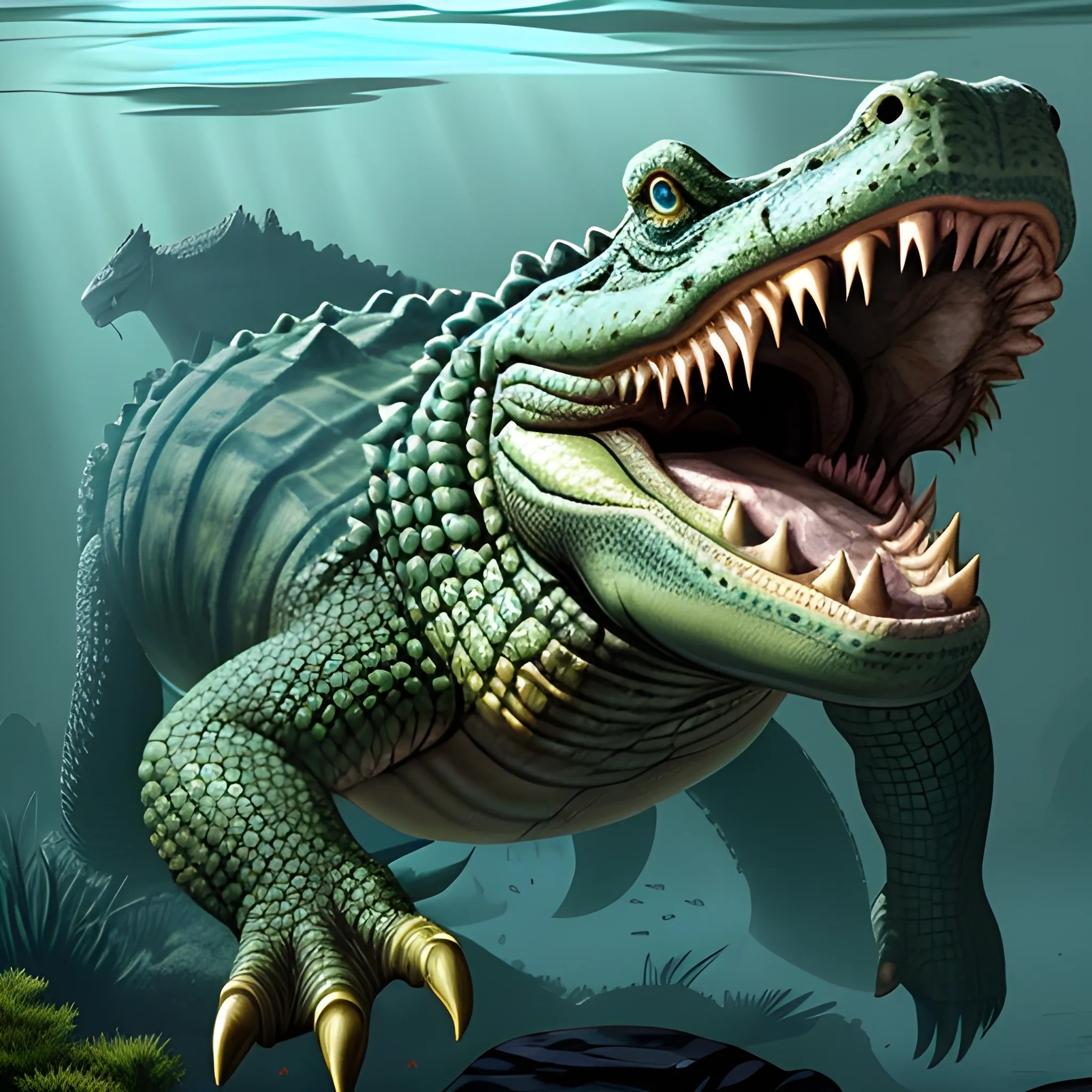
Appearance: The Giant Crocodile is an enormous and monstrous reptile , dwarfing its smaller counterpart in size and power. It has a massive body covered in thick and rugged scales that can range from dark greens to deep browns , perfectly camouflaging it in its aquatic habitat. Its long and powerful tail serves as a formidable weapon , enabling it to swim swiftly and strike with devastating force. The Giant Crocodile's eyes gleam with an intelligence and predatory instinct that sets it apart from ordinary creatures. Features: The Giant Crocodile is a colossal apex predator , boasting immense strength and resilience. Its jaws are filled with rows of sharp teeth , capable of crushing bones and armor with ease. Unlike its smaller kin , the Giant Crocodile is fully adapted for a purely aquatic lifestyle , rarely venturing onto land except to bask in the sun or establish dominance in its territory. Habitat: Giant Crocodiles prefer large bodies of freshwater , such as expansive rivers , deep lakes , and marshlands. They are territorial creatures , claiming vast stretches of water as their hunting grounds. In your DND world , they could inhabit mysterious swamps or hidden lagoons , guarding ancient secrets or treasures. Behavior: As ambush predators , Giant Crocodiles are masters of surprise attacks. They remain mostly submerged , with only their eyes and nostrils visible above the water's surface. When potential prey ventures too close , the Giant Crocodile strikes with astonishing speed and strength , dragging victims underwater to drown or consume. Role in the World: In your DND world , Giant Crocodiles could be legendary creatures , feared and respected by both locals and adventurers alike. They might be considered as guardians of ancient temples or revered as avatars of primordial nature. Druids and rangers might see them as symbols of untamed and primal power. Encountering a Giant Crocodile in the wild is a dangerous and potentially deadly event for adventurers. Its size and power make it an incredibly challenging opponent , even for a well-prepared party. Players must exercise extreme caution when navigating bodies of water known to be inhabited by Giant Crocodiles , as these creatures can deliver swift and lethal attacks. The presence of Giant Crocodiles in your campaign can create an atmosphere of danger and trepidation when exploring swampy and aquatic environments. Players will need to be constantly vigilant and employ strategic thinking to avoid becoming victims of these monstrous reptiles. Crossing waterways or searching for hidden artifacts in areas known to be Giant Crocodile territory can create a sense of high stakes and urgency in your DND world. ,
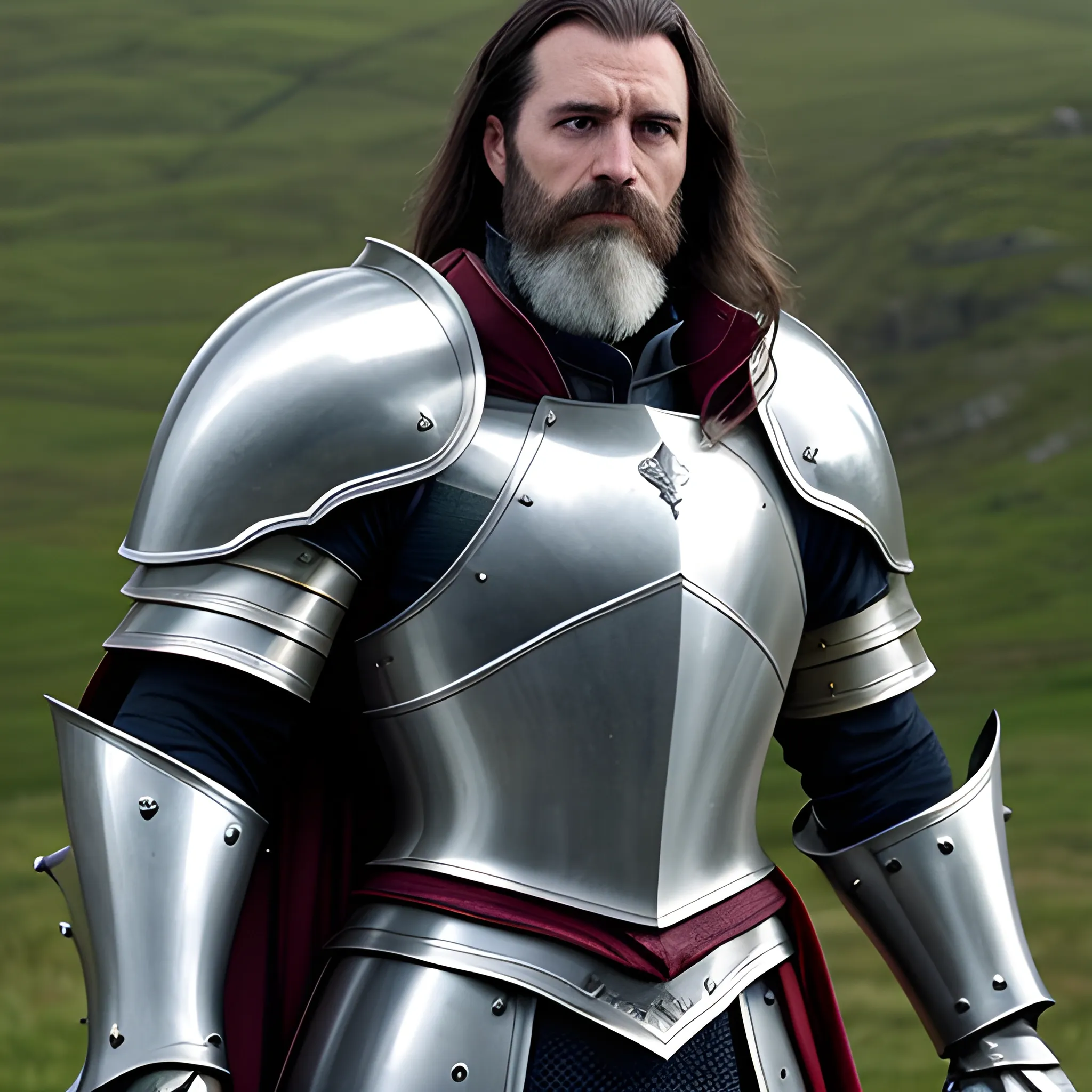
Appearance: Sir Garett stands tall , towering over most individuals with an imposing height. He possesses a well-built and muscular physique , a testament to years of rigorous training and combat experience. His dark hair is kept short and neat , and his sharp , piercing eyes reflect a keen sense of vigilance and determination. Despite the hardships of his profession , Sir Garett's face remains surprisingly youthful , framed by a neatly trimmed beard and mustache that add to his authoritative presence. Armor and Equipment: Sir Garett dons a suit of gleaming , intricately designed plate armor that glistens in the light. The armor is adorned with the emblem of Elric's house , signifying his unwavering loyalty and dedication to his master. A crimson cape flows gracefully from his shoulders , symbolizing his role as a guardian and protector. At his side , he carries a massive , finely crafted longsword , the weapon of a true knight , which he wields with mastery and precision. Demeanor: Despite his imposing appearance , Sir Garett is known for his calm and composed demeanor. He speaks with a deep , resonant voice that commands attention and respect. He is fiercely loyal to Lord Elric and shows unwavering dedication to his duty as his protector. Sir Garett carries himself with a sense of honor and chivalry , adhering to a strict code that governs his actions and decisions. Combat Skills: In battle , Sir Garett is a force to be reckoned with. His swordsmanship is unrivaled , and he displays expert knowledge of various combat techniques. His plate armor grants him exceptional protection , and he moves with surprising agility despite its weight. He is a skilled tactician , able to assess threats swiftly and efficiently , ensuring Lord Elric's safety is never compromised. Background: Sir Garett's impressive skill set and unwavering loyalty are the result of years of dedicated training and service to the Brightwood family. He hails from a lineage of esteemed knights , and his sense of duty and honor are deeply ingrained in his character. He has served Lord Elric since the latter's youth , forging a strong bond with him that goes beyond the master-guardian relationship. Personality: Beyond his role as a skilled guardian , Sir Garett is also a compassionate and caring individual. He is respected and admired by the villagers of Silverhelm for his dedication to protecting their lord and ensuring the safety and prosperity of the community. He possesses a dry , occasionally witty sense of humor , which provides moments of levity during challenging times. In the eyes of the villagers and Lord Elric himself , Sir Garett Ironshield is not just a remarkable warrior but a symbol of honor , loyalty , and unwavering protection. His presence instills a sense of security and confidence , making him an invaluable asset to Lord Elric's entourage. ,

Space ark sanctuary room. Man meditating in the center with a protective forcefield around his body. Sparkling light radiating from his third eye. Around him are a counsel of angelic guardians. In the style of fantasy art. digital art , cosmic universe. vibrant colors reflecting off of golden rays of light. Electric blue light , deep color , intricate detail , trending on Artstation Unreal Engine 5 ,
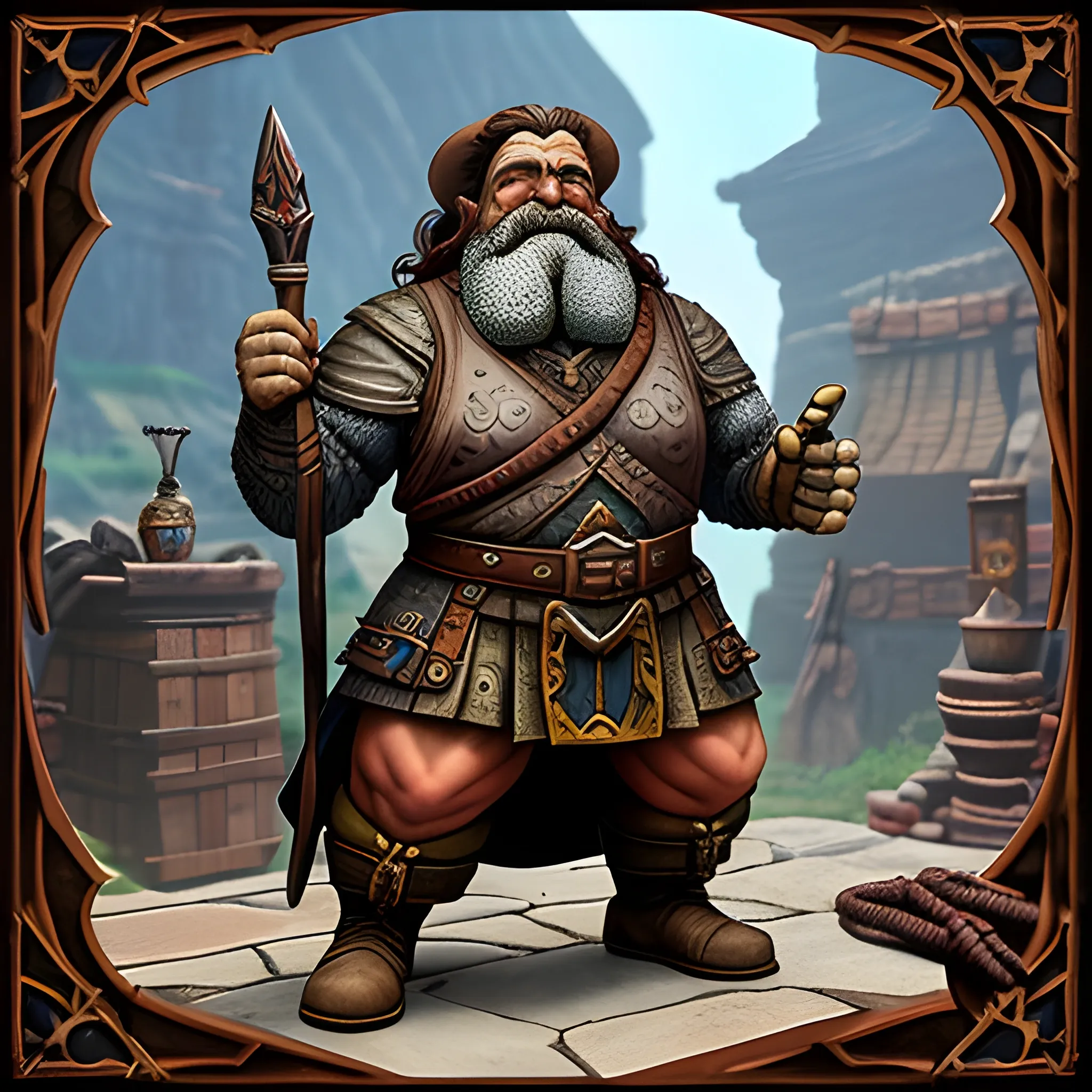
Appearance: The Dwarf smith is a stout and rugged figure , embodying the timeless image of their kin as master craftsmen. Their sturdy frame is adorned with a thick mane of braided , fiery-red hair that cascades down their broad shoulders. Their bushy beard is an impressive work of art , meticulously groomed and often adorned with small trinkets or metal accessories. Their eyes sparkle with determination and a deep passion for their craft , and their weathered hands bear the scars of countless hours spent at the forge. Features: The Dwarf smith is a skilled artisan , renowned for their exceptional craftsmanship and expert knowledge of metallurgy. They possess a deep understanding of various metals and their properties , enabling them to forge weapons , armor , and other masterpieces of unparalleled quality. Their workshop is a treasure trove of tools and materials , each item carefully organized and ready for use. Habitat: The Dwarf smith can be found in their bustling smithy , a place where the ringing of hammers against metal echoes through the air. Located either in the heart of a Dwarven stronghold or in a prominent human city , the smithy is a hub of activity , attracting adventurers seeking top-notch weapons and armor. In your DND world , this Dwarf might be part of a guild of esteemed craftsmen or a solitary artisan , dedicated to perfecting their craft. Behavior: True to their Dwarven nature , the smith is steadfast , dedicated , and fiercely proud of their work. They are renowned for their honesty and loyalty , and their reputation for delivering quality goods is impeccable. While their exterior may be gruff , they have a genuine warmth for those who appreciate their work and the art of blacksmithing. They take great pride in teaching their skills to the next generation , ensuring that the legacy of their craft endures. Role in the World: In your DND world , the Dwarf smith is more than a merchant of weapons and armor; they are a guardian of history and tradition. Their creations are sought after by warriors and adventurers who seek the best protection on their quests. The smith's craftsmanship is often the difference between life and death on the battlefield , and their work becomes an essential part of the heroes' journey. Encountering a Dwarf smith in your campaign can be a captivating and enriching experience for players. It presents an opportunity to delve into the intricacies of craftsmanship , trade , and the honor of hard work. The interactions with this dedicated artisan can lead to engaging role-playing moments , where players may seek their expertise , commission special items , or learn about the ancient art of blacksmithing. The presence of a Dwarf smith in your campaign world adds a sense of tradition and authenticity to the crafting aspect of your world. Their character serves as a reminder of the importance of skilled labor and the indomitable spirit of the Dwarven people. This NPC can become a beloved and respected character in your DND campaign , leaving a lasting impression on players as they journey through a world enriched by the artistry and dedication of skilled artisans. ,
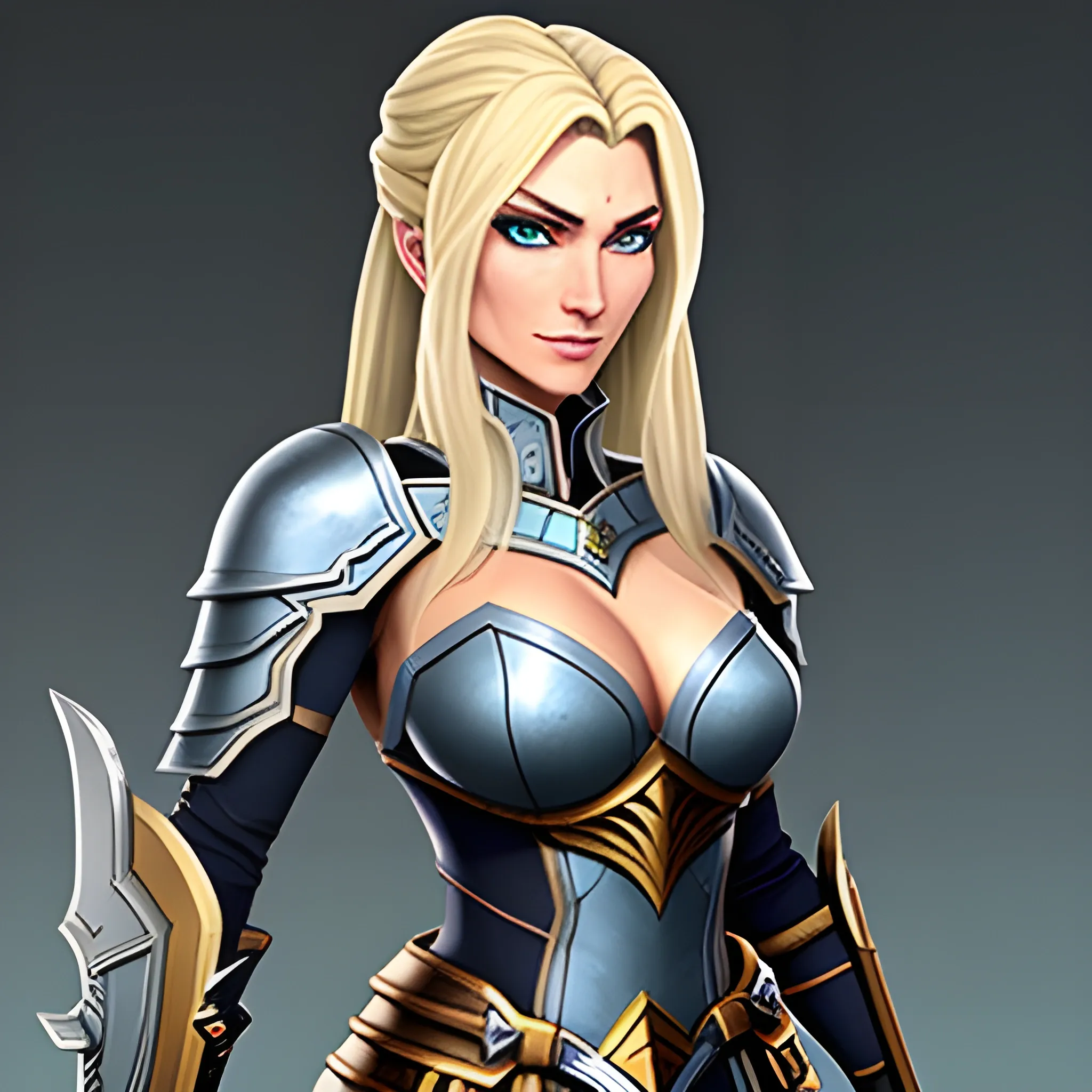
Appearance: Seraphina possesses a youthful and striking beauty , with long , flowing blond hair that cascades down her back like rays of sunlight. Her ocean-blue eyes sparkle with determination and a sense of adventure , mirroring the vast skies above the Isle of Everlight. She has a toned and athletic build , a testament to her years of training and physical prowess. Despite her youth , her aura exudes an air of maturity and confidence. Armor and Equipment: Seraphina wears a finely crafted set of armor , specially designed for her agile combat style. The armor provides excellent protection while allowing her the freedom of movement needed for swift and precise strikes. A stylized emblem of a lightning bolt , representing her surname "Stormrider , " is prominently displayed on her shoulder plate. She wields a slender but deadly longsword , its blade gleaming with an enchanting silvery aura. Demeanor: Energetic and vivacious , Seraphina approaches her duties with a zeal and sense of purpose that is contagious. She has a friendly and approachable demeanor , making her well-liked among the villagers of Silverhelm and Lord Elric's allies. Her interactions are filled with warmth and genuine interest in the people around her , establishing a strong rapport with those she encounters. Combat Skills: Seraphina is a highly skilled and agile combatant , specializing in swift and precise swordplay. She employs a combination of lightning-fast strikes and nimble footwork to outmaneuver her foes. Her battle style reflects her adaptability , making her equally formidable in one-on-one duels and on the battlefield amidst larger skirmishes. Background: Seraphina's journey as a skilled warrior began at a young age , inspired by her father's valor and the legends of heroic knights. She hails from a family of renowned knights and warriors , her father being a close friend and comrade of Sir Garett Ironshield. As a testament to her prowess , Seraphina was chosen by Sir Garett himself to serve as Lord Elric's guardian , a position she takes with great pride and honor. Personality: Beneath her fierce dedication to her duties , Seraphina possesses a kind heart and a sense of justice that fuels her desire to protect and serve. She is courageous , never hesitating to put herself in harm's way to shield Lord Elric or the villagers. Despite the seriousness of her role , she has a playful side and a keen sense of humor , enjoying camaraderie with fellow guards and the villagers alike. As a trusted member of Lord Elric's entourage , Seraphina Stormrider stands as a symbol of youthful determination and unwavering loyalty. Her presence adds a dynamic energy to the group , complementing Sir Garett's seasoned wisdom with her spirited enthusiasm. Together , they create a formidable and well-balanced team , united in their dedication to safeguarding their lord and the people of Silverhelm. ,

Appearance: The Giant Strong-Looking Ape is a colossal and awe-inspiring creature , towering over its smaller relatives with unmatched size and strength. It stands at least 15 feet tall when fully upright , its massive frame covered in thick and coarse fur that can range from dark brown to gray. The ape's muscular arms are capable of delivering devastating blows , and its hands have opposable thumbs , allowing it to manipulate objects with surprising dexterity for a creature of its size. Features: The Giant Strong-Looking Ape is a behemoth of raw power , possessing unmatched physical strength and resilience. Its formidable arms and massive claws make it a terrifying combatant , capable of crushing enemies with ease. In addition to its physical prowess , the Giant Strong-Looking Ape's intelligence is exceptional , enabling it to solve problems and even learn simple communication with others. Habitat: Giant Strong-Looking Apes inhabit remote and isolated regions , such as deep jungles , unexplored mountains , or hidden valleys. They are reclusive creatures , rarely encountered by humanoids. In your DND world , they might be guardians of ancient temples or sacred groves , revered as wise and powerful beings. Behavior: The Giant Strong-Looking Ape lives in small family groups , consisting of a dominant male , females , and offspring. While generally peaceful , they are fiercely protective of their territory and kin , resorting to aggressive displays or combat if threatened. Despite their fearsome appearance , they prefer to avoid conflict and are known to be surprisingly gentle with those who show respect and kindness. Role in the World: In your DND world , Giant Strong-Looking Apes could be enigmatic and mythical beings , seen as guardians of ancient secrets or protectors of nature's balance. Druids and rangers might form deep bonds with these majestic creatures , viewing them as ancient and wise allies in their quest to safeguard the natural world. Encountering a Giant Strong-Looking Ape in the wild is a rare and breathtaking event for adventurers. Players may feel a sense of awe and wonder as they behold this colossal creature , dwarfing everything around it with its immense size. If approached with caution and respect , adventurers might witness the intelligence and wisdom behind the Giant Strong-Looking Ape's eyes , offering opportunities for meaningful interactions and alliances. The presence of Giant Strong-Looking Apes in your campaign adds an air of mystery and majesty to remote and unexplored regions. Players may encounter these legendary creatures while venturing into uncharted territories or seeking to uncover ancient knowledge. Interacting with Giant Strong-Looking Apes can become a profound and transformative experience for adventurers , reminding them of the delicate balance between humanity and the natural world. These colossal beings can serve as both formidable opponents and steadfast allies , enriching the tapestry of your DND world with their legendary presence. ,
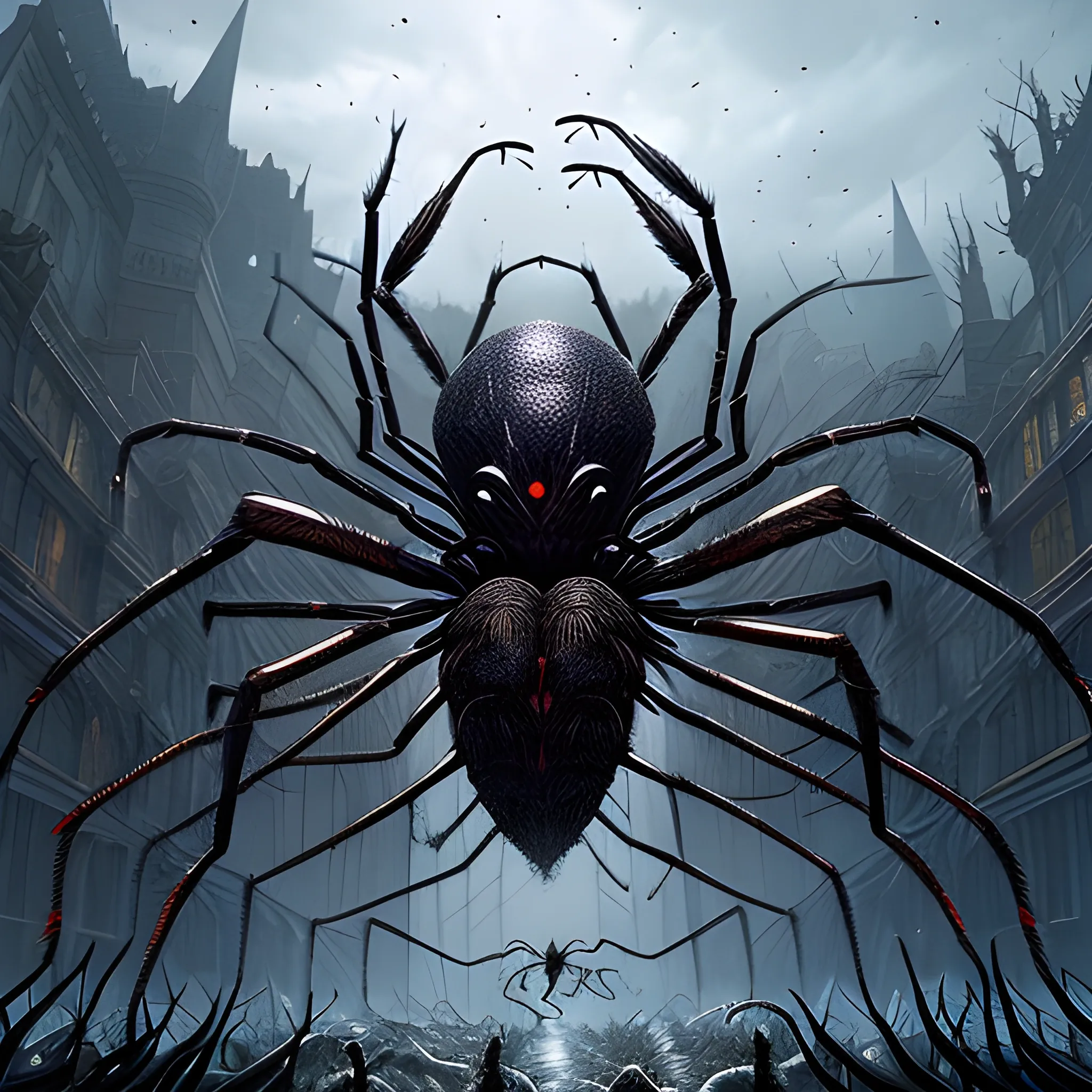
Appearance: A Swarm of Spiders is a horrifying and unsettling sight , as it consists of hundreds or even thousands of spiders working together as a single entity. The swarm appears as a writhing mass of crawling legs , forming a dark and undulating cloud of arachnids. The individual spiders in the swarm vary in size , but they are typically small , ranging from tiny spiders to larger ones with leg spans of a few inches. The swarm's color can range from a mix of dark browns and blacks to lighter hues , depending on the types of spiders comprising it. Features: The Swarm of Spiders moves with a coordinated fluidity , as if guided by an unseen intelligence. While each spider is relatively weak on its own , the collective strength of the swarm is overwhelming. The swarm is highly aggressive , attacking anything that comes within its vicinity. Its bite can deliver venom that , while not deadly , can cause pain , discomfort , and temporary paralysis. The swarm's sheer numbers can be its greatest advantage , allowing it to overwhelm and immobilize even larger creatures. Habitat: Swarms of Spiders are typically found in areas with a high concentration of spiders , such as dense forests , abandoned structures , or ancient ruins. They may inhabit dark and secluded places where their presence can go unnoticed until it's too late for unsuspecting intruders. Behavior: Swarms of Spiders are driven by instinct and the collective intelligence of the individual spiders that make up the swarm. They act as a cohesive unit , attacking en masse to subdue their prey and cocoon it in sticky webs. Swarms of Spiders can move quickly , scaling walls and surfaces with ease , which makes them challenging to escape from once they have engaged a target. Role in the World: In your DND world , Swarms of Spiders could be a terrifying threat lurking in the wild and dark corners of the land. They might be drawn to areas of powerful magic or necromantic influence , serving as guardians to forbidden places or the minions of evil spellcasters. The sight of a Swarm of Spiders can instill fear and panic in adventurers , as they face an unrelenting horde of venomous creatures. Encountering a Swarm of Spiders in your campaign can be a harrowing experience for adventurers. The swarm's ability to cover large areas and its relentless pursuit make it a deadly adversary. Players might need to think creatively to avoid or disperse the swarm , using spells , fire , or other area-of-effect attacks to fend off the spider horde. Additionally , the presence of Swarms of Spiders can create a sense of dread and trepidation , heightening the tension in areas where they are known to dwell , making players ever watchful for the signs of these arachnid hordes. ,
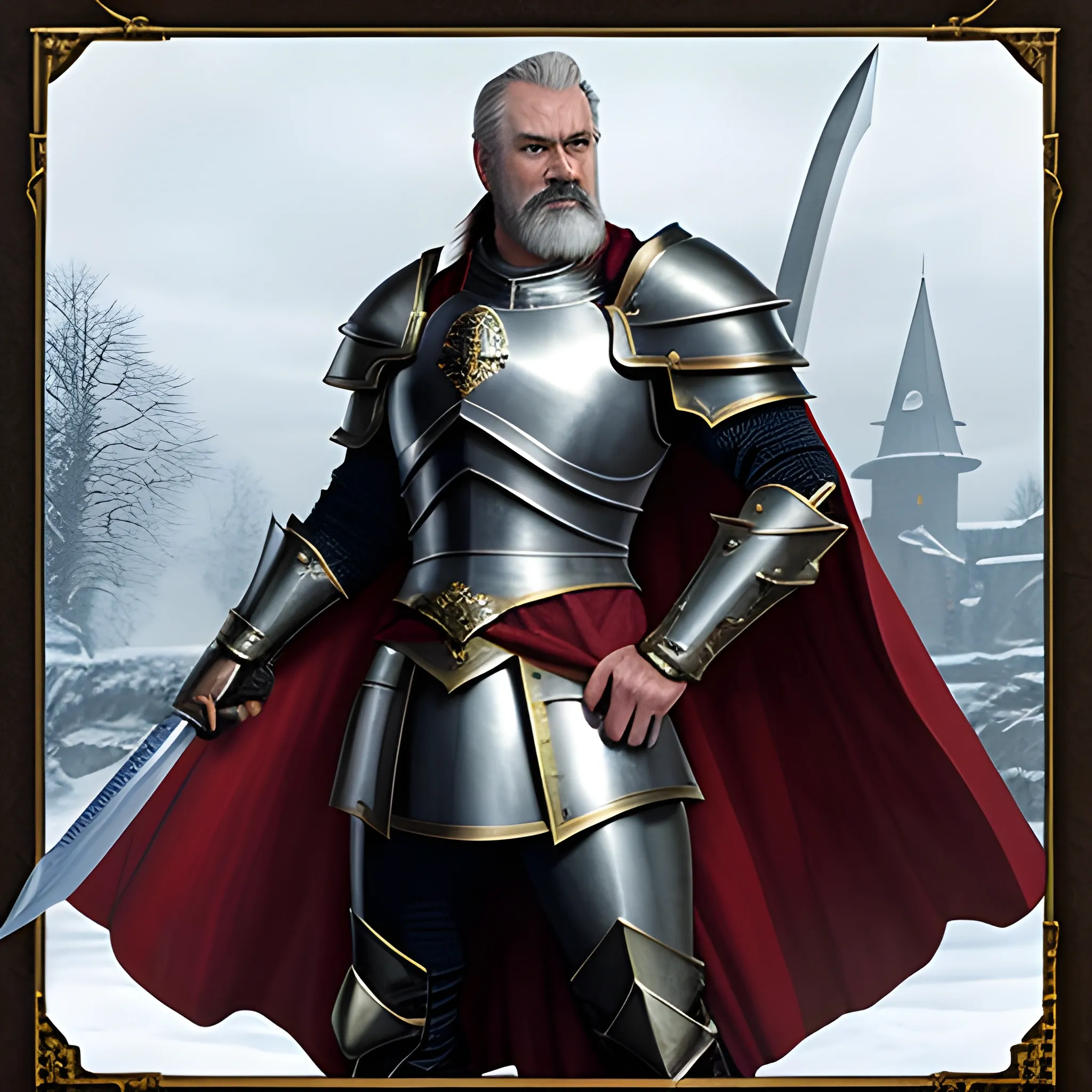
Appearance: Sir Garett stands tall , towering over most individuals with an imposing height. He possesses a well-built and muscular physique , a testament to years of rigorous training and combat experience. His dark hair is kept short and neat , and his sharp , piercing eyes reflect a keen sense of vigilance and determination. Despite the hardships of his profession , Sir Garett's face remains surprisingly youthful , framed by a neatly trimmed beard and mustache that add to his authoritative presence. Armor and Equipment: Sir Garett dons a suit of gleaming , intricately designed plate armor that glistens in the light. The armor is adorned with the emblem of Elric's house , signifying his unwavering loyalty and dedication to his master. A crimson cape flows gracefully from his shoulders , symbolizing his role as a guardian and protector. At his side , he carries a massive , finely crafted longsword , the weapon of a true knight , which he wields with mastery and precision. Demeanor: Despite his imposing appearance , Sir Garett is known for his calm and composed demeanor. He speaks with a deep , resonant voice that commands attention and respect. He is fiercely loyal to Lord Elric and shows unwavering dedication to his duty as his protector. Sir Garett carries himself with a sense of honor and chivalry , adhering to a strict code that governs his actions and decisions. Combat Skills: In battle , Sir Garett is a force to be reckoned with. His swordsmanship is unrivaled , and he displays expert knowledge of various combat techniques. His plate armor grants him exceptional protection , and he moves with surprising agility despite its weight. He is a skilled tactician , able to assess threats swiftly and efficiently , ensuring Lord Elric's safety is never compromised. Background: Sir Garett's impressive skill set and unwavering loyalty are the result of years of dedicated training and service to the Brightwood family. He hails from a lineage of esteemed knights , and his sense of duty and honor are deeply ingrained in his character. He has served Lord Elric since the latter's youth , forging a strong bond with him that goes beyond the master-guardian relationship. Personality: Beyond his role as a skilled guardian , Sir Garett is also a compassionate and caring individual. He is respected and admired by the villagers of Silverhelm for his dedication to protecting their lord and ensuring the safety and prosperity of the community. He possesses a dry , occasionally witty sense of humor , which provides moments of levity during challenging times. In the eyes of the villagers and Lord Elric himself , Sir Garett Ironshield is not just a remarkable warrior but a symbol of honor , loyalty , and unwavering protection. His presence instills a sense of security and confidence , making him an invaluable asset to Lord Elric's entourage. ,

Guardian of the shrooms and dmt armored , woman with iridescent , wing-like pauldrons , standing tall amidst an ethereal grove of towering , luminescent mushrooms , the forest floor covered in sparkling dewdrops , a mystical aura emanating from her presence , the air filled with a soft , golden glow , captured through a hyper-realistic digital painting with a focus on intricate details and a seamless blend of natural and magical elements , rendered using a combination of Blender and Photoshop. dark , mesh top , blonde , lust , , Trippy , Trippy ,
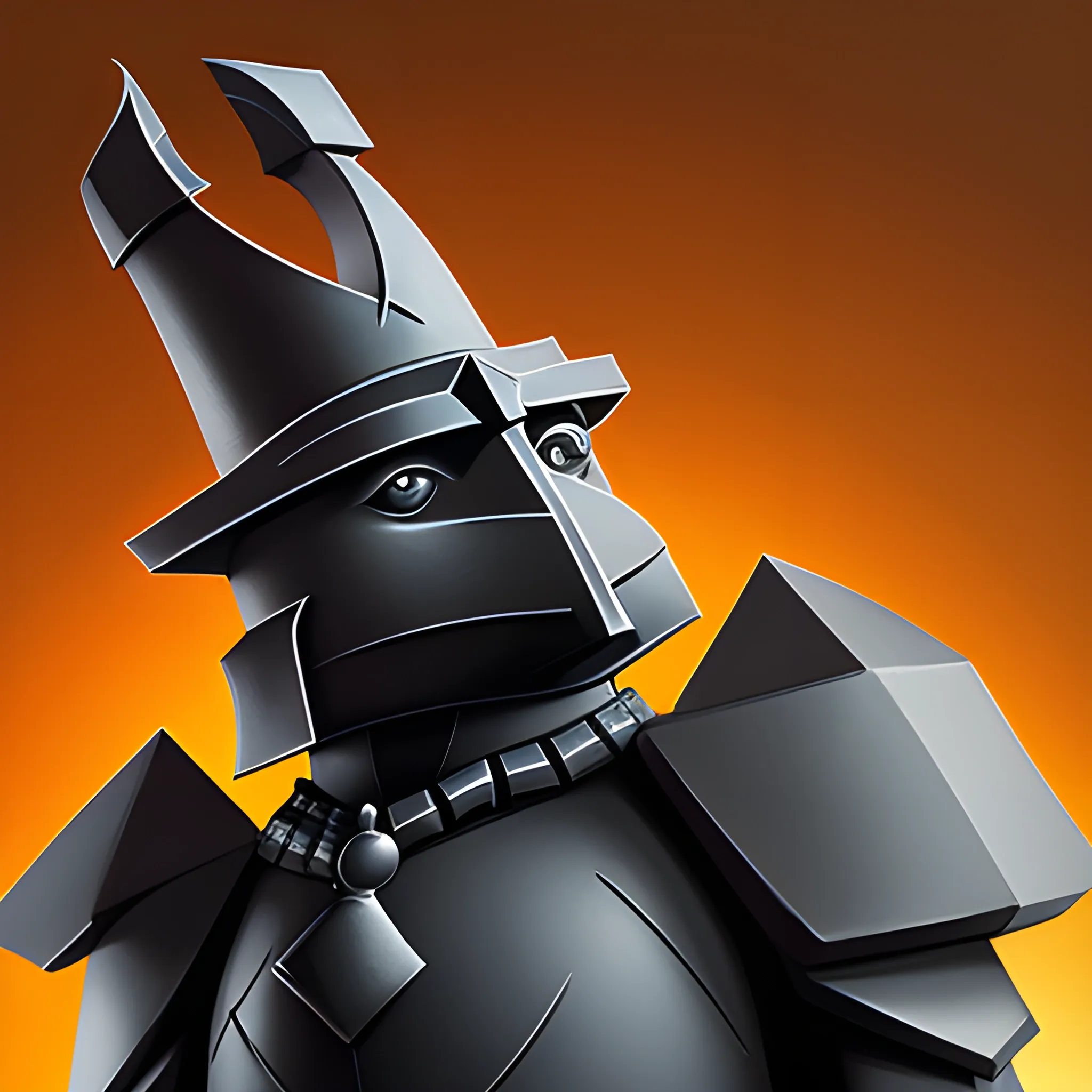
Generate a caricature depicting the rook as the fortress of data security , a stalwart defender of business information. This rook is portrayed as a mighty guardian , exuding strength and vigilance , standing tall and resolute. The caricature should feature a fortified castle with data symbols emblazoned on its walls , symbolizing the impenetrable defense of valuable business data. The rook's expression should convey a sense of unwavering protection and readiness to ward off any threats to data security ,

Step into a realm of ethereal beauty and mythical charm as you conjure an AI artwork centered around a silver-haired elf girl adorned with an extraordinary feature—four delicately pointed ears. Embrace the essence of this enigmatic being and let your artistic vision unveil her captivating story. Imagine this enchanting elf girl , a vision of grace and elegance , with silver tresses cascading around her as if touched by moonlight. Each of her four ears , delicately shaped and adorned , imbue her with an otherworldly allure. Consider the position and intricacies of each ear—do they curve slightly differently , or are they symmetrical in nature? Let their presence add an air of mystique and individuality to her character. Explore her surroundings—a verdant woodland bathed in soft , dappled light , or a celestial realm where stars shimmer with ethereal glow. Choose a color palette that harmonizes with her radiant silver hair , using hues that evoke a sense of magic and wonder. Perhaps her eyes possess a mesmerizing hue , reflecting the depths of an emerald sea or the vivid colors of an ancient forest. As you craft her personality , delve into the depths of her backstory. Is she a guardian of ancient wisdom , her unique ears attuned to hidden whispers and forgotten tales? Or is she an emissary between realms , bridging the gap between mortals and mythical beings? Let her expression convey an air of wisdom , curiosity , or a touch of mischievousness. Consider her attire—a delicate gown adorned with intricate patterns , symbolizing her connection to nature , or an ensemble woven with celestial threads that shimmer like stardust. Accentuate her elegant features , emphasizing the delicate contours of her face and the gracefulness of her movements. Let your artistic prowess shine as you use AI tools to bring this four-eared elf girl to life. Experiment with different artistic styles , from realistic to fantastical , ensuring that her unique beauty and enchanting presence are beautifully portrayed. Capture the essence of her character , the magic that emanates from her very being. Immerse viewers in a world where the mundane becomes extraordinary , where the convergence of fantasy and reality breathes life into a silver-haired , four-eared elf girl. With your AI artistry , invite others to marvel at her ethereal presence , sparking their imaginations and leaving them yearning for a glimpse into the enchanting depths of her realm. Now , let your creativity flow like an ancient melody , as you unveil the captivating tale of this silver-haired , four-eared elf girl through your awe-inspiring AI artwork. ,

In the heart of a vibrant underwater metropolis on an alien ocean world , a cephalopod-like extraterrestrial emerges from the city's bioluminescent kelp forests. Adorned in shimmering aquatic attire and wielding a coral staff , this aquatic alien glides gracefully through the bustling cityscape. Its eyes , glowing with a deep understanding of oceanic mysteries , observe the intricate dance of holographic marine life that populates the surrounding waters. Symbols of interstellar harmony float alongside them , forming intricate patterns in the liquid atmosphere. This composition tells the tale of an extraterrestrial custodian , a guardian of the alien aquatic realm , embodying the unity between cosmic intelligence and the mesmerizing depths of intergalactic oceans. ,
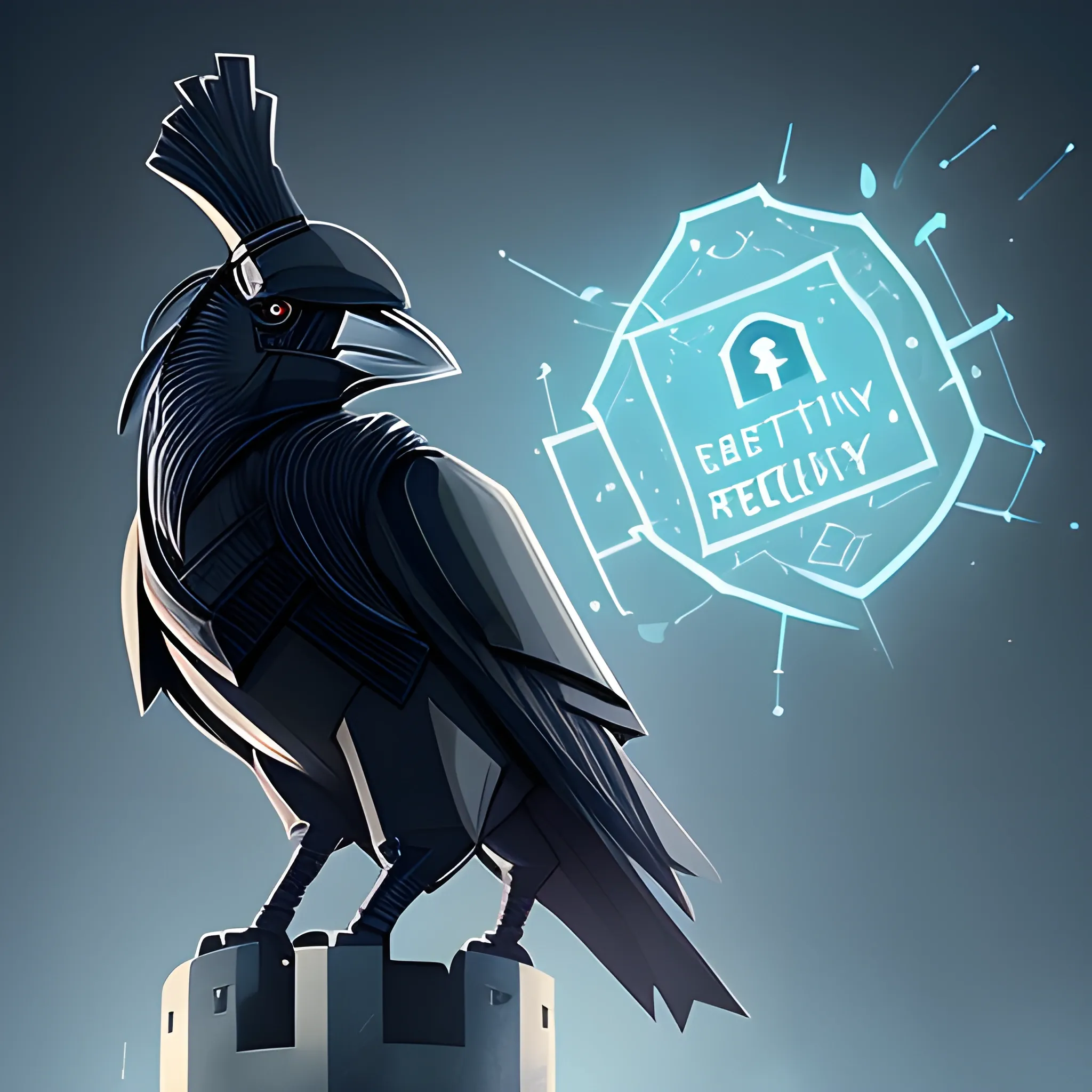
Generate a caricature depicting the rook as the fortress of data security , a stalwart defender of business information. This rook is portrayed as a mighty guardian , exuding strength and vigilance , standing tall and resolute. The caricature should feature a fortified castle with data symbols emblazoned on its walls , symbolizing the impenetrable defense of valuable business data. The rook's expression should convey a sense of unwavering protection and readiness to ward off any threats to data security ,
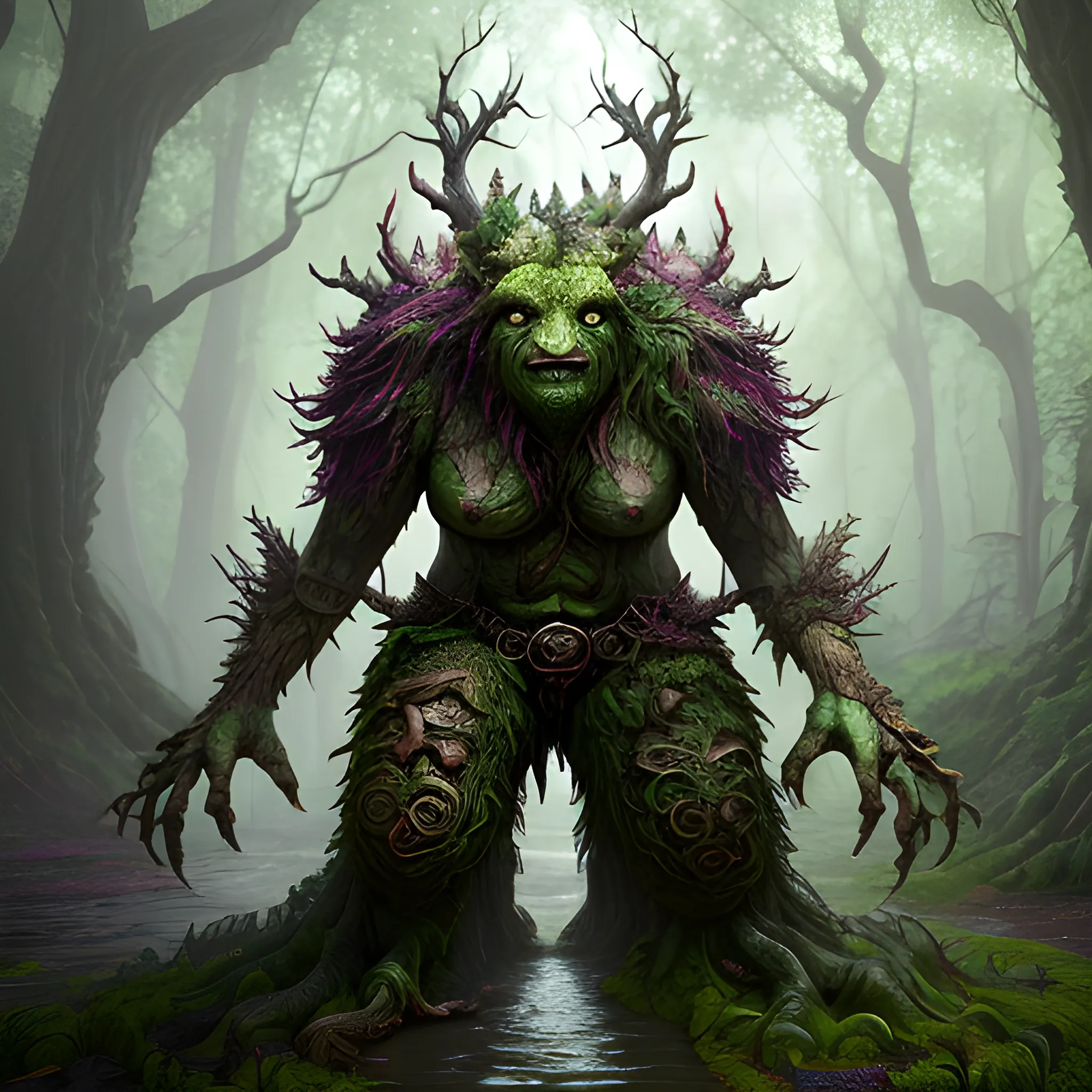
forest guardian , tree monster , high fantasy , 8k , high resolution , high quality , insane detailed face , detailed , detailed matte painting , deep color , fantastical , intricate detail , splash screen , complementary colors , fantasy concept art , 8k resolution trending on Artstation Unreal Engine 5 ,

Guardian of the shrooms and dmt armored , woman with iridescent , wing-like pauldrons , standing tall amidst an ethereal grove of towering , luminescent mushrooms , the forest floor covered in sparkling dewdrops , a mystical aura emanating from her presence , the air filled with a soft , golden glow , captured through a hyper-realistic digital painting with a focus on intricate details and a seamless blend of natural and magical elements , rendered using a combination of Blender and Photoshop. dark , mesh top , blonde , lust , Cartoon ,
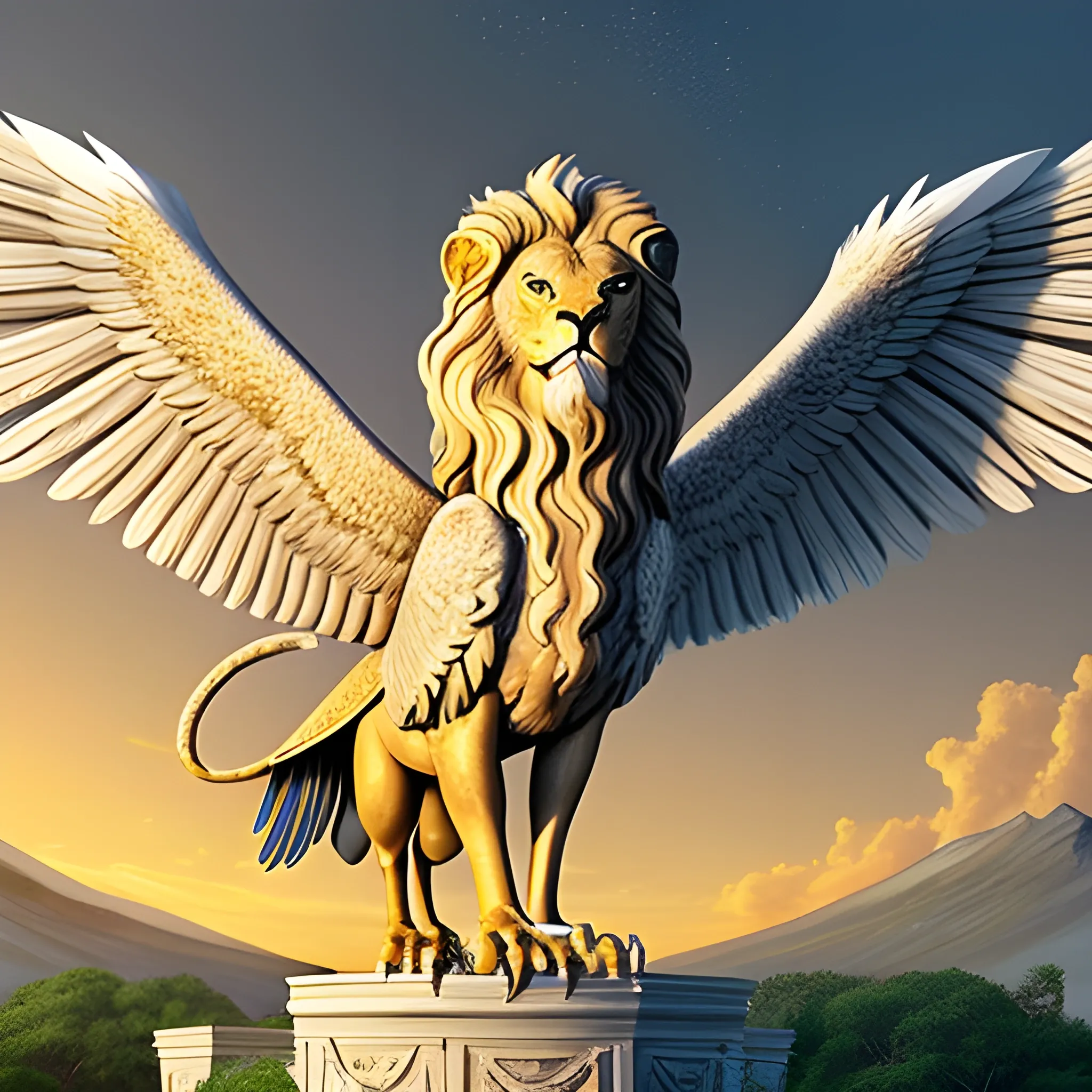
Explore the enchanting world of the Griffin , a mythical creature that combines the body of a lion with the wings and head of an eagle. This creature , often seen as a symbol of both land and sky , originates from ancient Greek and Persian mythology.Showcases the Griffin in its full grandeur , emphasizing its dual nature as a land and sky guardian. Capture the regal elegance of its lion body and the majestic power of its eagle's wings. ,
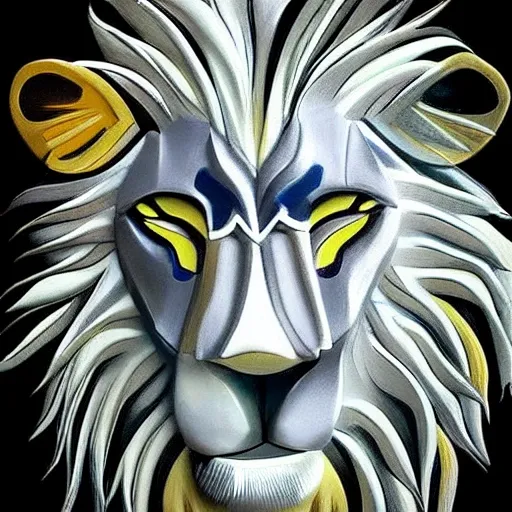
In this prompt , you will create a striking and awe-inspiring digital artwork of a futuristic armoured lion warrior. The lion warrior is composed of a unique blend of materials , including metal , glass , wood , steel , and gold. Its appearance is regal and powerful , exuding an air of strength and resilience. The armour of the lion warrior is intricately designed , with each material seamlessly integrated to create a visually captivating ensemble. The mixture of metal , glass , wood , steel , and gold brings a harmonious balance of organic and technological elements , showcasing the fusion of nature and advanced craftsmanship. The eyes of the lion warrior are like two radiant red pearls , glowing with intensity and determination. They emit an aura of focus and vigilance , reflecting the lion's unwavering commitment to its duties as a guardian. Flowing from the background are soft , beautiful artistic colors , dripping and blending into each other. The colors create a vibrant and ethereal atmosphere , hinting at a dreamlike or otherworldly setting. The careful brushstrokes and delicate gradients contribute to a sense of fluidity and movement within the artwork. The lion itself is made of a sleek , black , shiny material , exuding a sense of mystery and power. Its features are finely detailed , capturing the noble expression and majestic presence of a lion. The futuristic armoured design adds a modern and technological twist to this ancient symbol of strength and royalty. The lion warrior's neon yellow hair serves as a bold contrast to the darker elements of the artwork. The electrifying hue represents energy and vitality , suggesting that this guardian possesses an unparalleled vigor and zest for protecting what is important. Overall , the artwork you create will merge the elements of nature , technology , and artistry into a captivating image. The futuristic armoured lion warrior , with its mesmerizing materials , radiant eyes , artistic color palette , and powerful presence , will serve as a symbol of strength , protection , and beauty. , 3D , Trippy ,

Appearance: A skeleton is a reanimated undead creature , the animated remains of a once-living being. They are skeletal in form , devoid of flesh and organs , and are held together by dark necromantic magic. Their bones can be of various sizes and shapes , depending on the creature they were before death. The bones of a humanoid skeleton are often bleached white , while those of larger creatures might retain a more weathered appearance. Features: Skeletons are mindless creatures , devoid of the emotions and intellect they possessed in life. Their movements are stiff and jerky , controlled by the magic that animates them. They lack the strength and capabilities they had in life but can still be formidable due to their resistance to exhaustion and immunity to poison and many mind-affecting spells. Habitat: Skeletons can be found in various environments , wherever dark necromantic magic is practiced or where ancient burial sites have been disturbed. They are often encountered in crypts , dungeons , or as guardians of forgotten tombs. In your DND world , they might be the remnants of fallen warriors or victims of dark rituals , arising to serve their necromantic masters. Behavior: As mindless undead , skeletons are compelled to follow the commands of their creators or necromancers who control them. They have no will of their own and exist solely to fulfill the tasks assigned to them. Whether that means guarding a location , attacking intruders , or carrying out a specific purpose , skeletons are bound to carry out their orders until they are destroyed. Role in the World: In your DND world , skeletons could serve as a constant reminder of the dark arts and the dangers of necromancy. They may be used by evil necromancers as minions or guardians , lurking in ancient crypts or dungeons to deter intruders. Adventurers might encounter them in their quest to thwart dark forces or uncover the secrets of long-forgotten ruins. Encountering a skeleton in your campaign often means dealing with a mindless foe that is immune to many traditional methods of persuasion. Adventurers might use various tactics to overcome them , such as using holy magic , radiant damage , or weapons that can shatter or disassemble the undead. While individually not as threatening as some other creatures , the real challenge lies in facing hordes of skeletons , as their numbers can quickly overwhelm unprepared adventurers. ,




